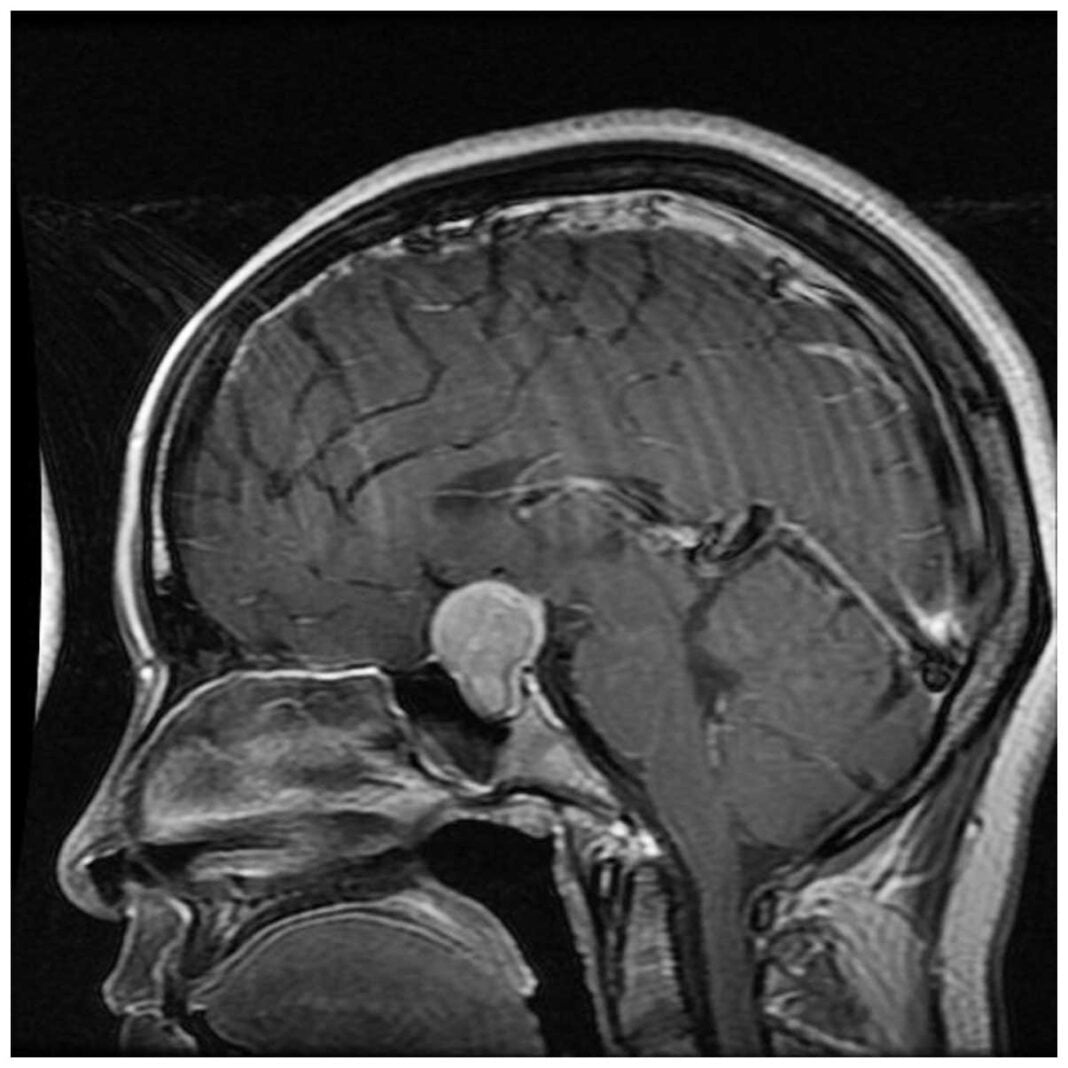The pituitary macroadenoma is abnormal growth which develops in the pituitary gland. Some pituitary macroadenomas result in too many of the hormones which regulate important functions of the body. This macroadenomas can cause your pituitary gland to produce lower levels of hormones.
The most pituitary macroadenomas are noncancerous (benign) growths (also known as adenomas). Adenomas remain in the pituitary glands or surrounding tissues and they do not spread to other parts of the body. There are many different options for treating the pituitary macroadenomas, including the removing of tumor, controlling its growth and managing your hormone levels with medications. Also, your doctor can recommend you observation or a wait and see approach.
Symptoms

You should know that not all pituitary macroadenomas cause symptoms. The pituitary macroadenomas which make hormones (functioning) can cause many different signs and symptoms which depend on the hormone which they produce. The signs and symptoms of the pituitary macroadenomas which do not make hormones (nonfunctioning) are related to their growth and pressure they put on other structures. The large pituitary macroadenomas (those measuring about one centimeter, slightly less than a half of inch) or larger, are known as macroadenomas. The smaller tumors are called microadenomas. Due to the size of the macroadenomas, they can put pressure on the normal pituitary gland and nearby substances. The signs and symptoms of pressure from a pituitary macroadenomas can include
- Vision loss, particularly loss of peripheral vision [1]
- Headache [2]
It is known that functioning pituitary macroadenomas cause overproduction of hormones. There are different types of functioning tumors in the pituitary glands which cause specific signs and symptoms and sometimes a combination of them. The large tumors can cause hormonal deficiencies and the signs and symptoms include
- Unintended weight loss or grain
- Increased amount of urine
- Sexual dysfunction
- Less frequent or no menstrual periods
- Feeling cold
- Weakness
- Nausea and vomiting
In many cases, this macroadenomas can go undiagnosed because their symptoms resemble to those of other conditions. Also, there are some cases when this macroadenomas are found because of medical tests for other conditions. Your doctor will take a detailed history and he or she will perform a physical exam. Also, your doctor can make vision testing, brain imaging and blood and urine tests. Also, your doctor can refer you to an endocrinologist for more extensive – testing.
Causes
The cause of uncontrolled cell growth in the pituitary gland, that is creating a tumor, remains unknown. We know that the pituitary gland is small and bean – shaped gland which is situated at the base of your brain, somewhat behind the nose and between your eyes. It is small in size, but the gland influences nearly every part of your body. The hormone it produces helps to regulate the important functions, such as growth, blood pressure and reproduction. There are some studies in which are said that a small percentage of pituitary tumor cases run in families, but in the most cases, they do not have apparent hereditary factor. But scientists suspect that genetic alternations play an important role in how pituitary tumors develop.
Risk factors
It is noticed that people who have a family history of certain conditions, such as multiple endocrine neoplasia, type 1 (MEN 1), have an increased risk of pituitary macroadenomas [3]. In MEN 1, the pituitary macroadenomas happen in different glands of the endocrine system. The genetic testing is available for this disorder.
Complications
The hepituitary macroadenomas usually do not grow or spread extensively. But they can affect your health, possibly causing vision loss (it is known that the pituitary macroadenomas can put pressure on the optic nerves) [1] and permanent hormone deficiency (the presence of the pituitary macroadenomas or the removal of one may permanently alter your hormone supply, which needs to be replaced with hormone medications) [4]. It is rare, but potentially serious complication of pituitary macroadenomas is pituitary apoplexy, when sudden bleeding into the tumor happens [5]. It feels like the most severe headache you have ever had. The pituitary apoplexy is requiring emergency treatment, usually with corticosteroids and possibly surgery.
References:
[1] Ho RW, Huang HM, Ho JT. The influence of pituitary adenoma size on vision and visual outcomes after trans-sphenoidal adenectomy: A report of 78 cases. Journal of Korean Neurosurgical Society. 2015;57(1):23–31. doi:10.3340/jkns.2015.57.1.23
[2] Levy MJ, Jager R, Powell M. Pituitary volume and headache: Size is not everything. Archives of Neurology. 2004;61(5):721-725. doi:10.1001/archneur.61.5.721
[3] Tatsi C, Stratakis CA. The genetics of pituitary adenomas. Journal of Clinical Medicine. 2020;9(1):30. doi:10.3390/jcm9010030
[4] Lake MG, Kroos LS, Cruz SV. Pituitary adenomas: An overview. American Family Physician. 2013;88(5):319-27.
[5] Xiao D, Wang S, Huang Y, et al. Clinical analysis of infarction in pituitary adenoma. International Journal of Clinical and Experimental Medicine. 2015;8(5):7477–86.




